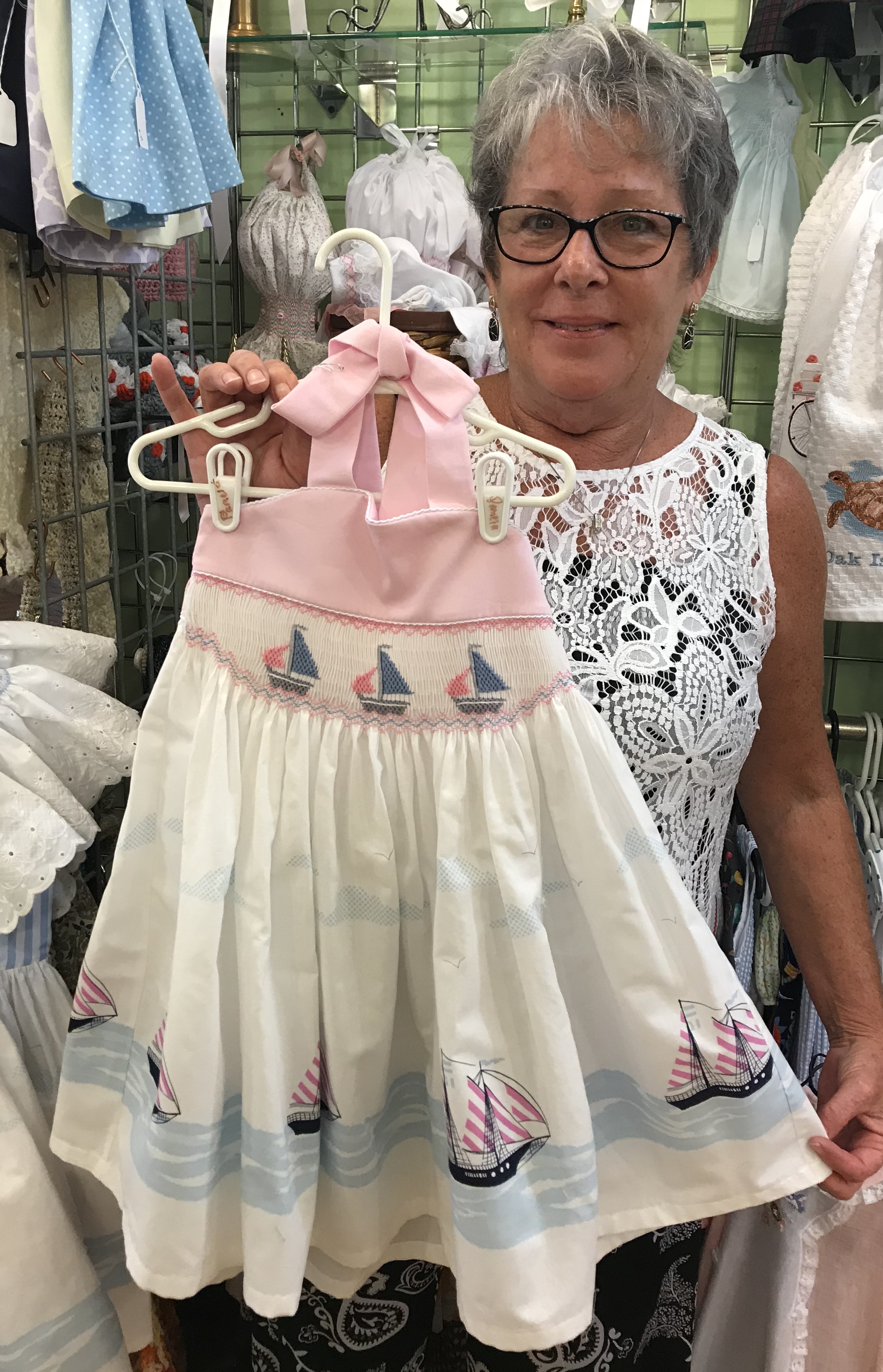Art of the Needle

Art of the Needle
Smocking: sewing art form of the past
Story & Photos by Carla Edstrom
Once a necessity in everyday work clothing before the invention of elastic, smocking is making resurgence from its historic roots, and is now considered an heirloom sewing art form. It has been passed down for centuries much the same way as knitting, crocheting and other primitive textile work, from generation to generation through families. Smocking is basically a hand embroidery technique that involves gathering fabric into pleats so it can stretch, and has recently come back into style especially in children’s clothing.
Local seamstress, Pamela Wakefield, first learned sewing from her grandmother. “Smocking is described as decorative stitching, or embroidery on tiny pleats,” she explained. “The origins are described in many ways but I always remember being told it was a way to create an ornamental or decorative element of elasticity in a feed sack garment to allow many years of wear in a growing child by releasing the stitches to enlarge the garment,” she said. “Today, a smocked garment is just classically timeless!” According to Wakefield, smocked dresses are especially very popular right now in children’s clothing styles as seen on little Princess Charlotte.
Being originally from Nova Scotia, Canada and raised in the Maritime Provinces, Wakefield learned how to sew and make beautiful garments on her grandmother’s lap when she was seven or eight years old. “She had a treadle sewing machine, so I remember sitting on her knee and she would treadle it because I couldn’t reach the pedal and I would steer (the fabric) through it,” she explained. “During high school I was already sewing my own clothes, knitting, and crocheting for friends and family,” she said. “I learned hand embroidery and did many dresser scarves and tablecloths.”
“While others may see my work as tedious and stressful, it is the most relaxing activity for me,”
“Fabric is my inspiration. Although I have been interested in fiber arts for as long as I can remember, my concentration has maintained a constant with anything vintage and or heirloom,” explained Wakefield. “During my senior year of High School I actually applied to, and was accepted into the textile arts program at St. Andrews, NB Canada. It just was not considered a career path at the time,” she said.
So, Wakefield decided to go into nursing. “I immigrated to the United States as a Registered Nurse during a Nursing shortage as a Travel Nurse. After multiple assignments in the New England states, I was recruited for an assignment at a local hospital,” she said. “In 2012, health issues prevented me from returning to work and I longed for activities to fill my days. At this time I started to indulge in a more professional approach to build and improve my Heirloom and Smocking skills. I worked diligently to obtain my Licensing and Teacher Certifications from world-renowned Martha Pullen School in both Heirloom Sewing and Children’s Garment Construction.”
“Heirloom sewing is often described as an old style of specialty sewing. While that is true, there is much more to heirloom and smocked clothing. But primarily, the high quality of fabrics, French laces, and trims that are used,” Wakefield explained. “Because of the hours spent smocking a garment, one would not be expected to use low quality fabrics/ materials. I use only high quality cotton fabrics, imported French cotton laces, cotton threads, and cotton trims. Some of my fabrics are designer fabrics and although they are 100% cotton, are not considered heirloom quality, yet are superior to a box store choice.”
Wakefield’s lifelong love of vintage fiber arts and hobby sewing has turned into a small business of sorts, making beautiful christening gowns and children’s smocked dresses. She finds the fine detail work that goes into her beautiful clothing therapeutic and relaxing. “While others may see my work as tedious and stressful, it is the most relaxing activity for me,” she said. “My favorite pieces to make are Christening Gowns! Yards and yards of luscious fabric and lace! I can integrate smocked pieces and be so creative with lace insertion and lace shaping. Hand embroidery is endless with these gowns. The Bishop dress comes in a close second, the most versatile and classic dress style of Heirloom sewing.” You can find her work for sale at Duck Duck Goose on Howe Street in Southport, or email her directly at winnie57rn@yahoo.com.











Leave a Reply